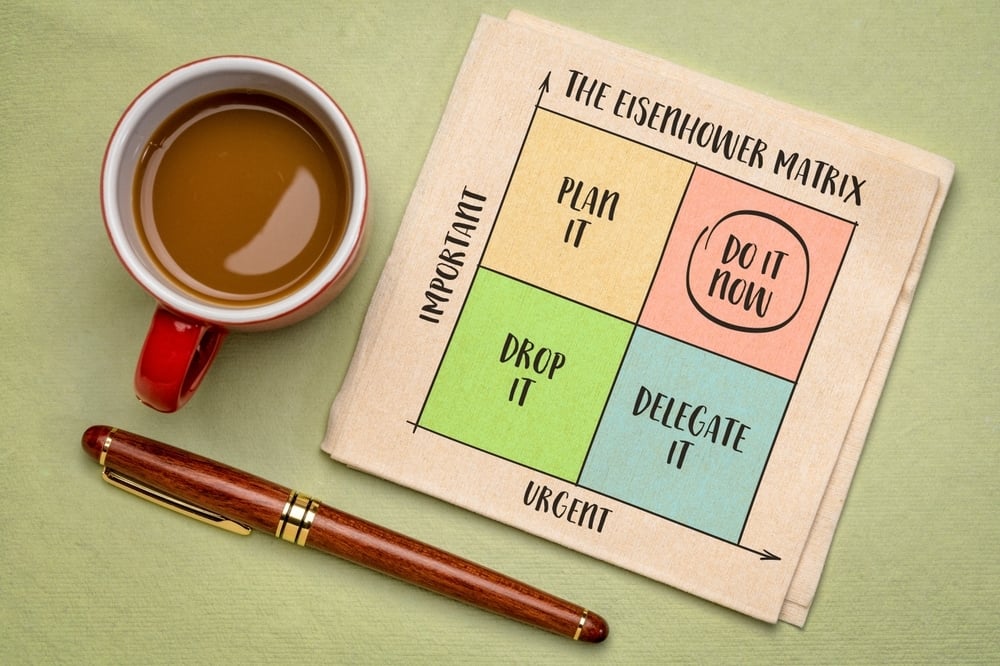
The Key Stages of Business Growth: How to Scale Successfully
by Tara Covell
Listen to Audio Version:
Last Updated: 19 May, 2025
Growing a business isn’t just about working harder—it’s about knowing what to focus on and when. Every business moves through different stages, from the early days of figuring things out to the challenge of managing growth and, eventually, preparing for long-term success.
But the reality is that growth isn’t always linear. Some businesses expand too fast and struggle with cash flow. Others plateau because they’re too cautious. Understanding which stage you’re in allows you to develop a business growth plan, build resilience, and grow at a pace that’s right for you.
Where is your business right now? And more importantly, where do you want it to go next?
Table of Contents
What are the stages of business growth?
Every business moves through distinct phases as it develops. These are often referred to as the 'stages of business growth' or the 'business lifecycle', and understanding where your business sits can make all the difference when it comes to setting priorities and planning what’s next.
Several well-known models describe this journey. The Greiner Curve, for example, outlines how businesses evolve through phases of growth, each followed by a crisis that must be overcome to continue scaling—such as leadership bottlenecks or internal coordination challenges. Meanwhile, the Startup to Scaleup model highlights the shift from early validation and traction to building a sustainable, high-functioning operation.
While each model uses slightly different terminology, they all reflect a common truth: your business will face different challenges at different points, and each stage requires its own mindset, systems and strategy.
At The Alternative Board, we use a practical five-stage framework based on the real-world experiences of UK business owners: Start-Up, Growth, Maturity, Expansion or Renewal, and Succession or Exit.
Each of these stages brings its own priorities, whether it’s building credibility, streamlining operations, or planning your long-term exit. Recognising where you are helps you focus on what matters now, instead of chasing solutions for problems you don’t yet have.
Why knowing your stage matters
Each stage of business growth brings different challenges. Trying to solve future-stage problems too early or ignoring current ones can lead to wasted effort or missed opportunities. Knowing where you are helps you prioritise, plan, and progress with purpose.
It also helps you ask the right questions:
-
Do you need structure or scale?
-
Are you preparing to grow, or preparing to exit?
-
What kind of support will make the biggest difference now?
Understanding your stage doesn’t just improve strategic thinking, it increases your chances of long-term success.
According to The Telegraph, 60% of new UK businesses fail within three years, with 20% going under in their first year. ONS data adds that only 42.5% of new businesses were still trading five years after launching (2014–2019).
These figures show just how critical clarity and planning are, especially in the early years. But there’s good news too: the number of UK business formations has outpaced dissolutions every year since 2010, showing that with the right foundations, growth is absolutely achievable.
Stage 1: Startup – Turning an Idea into a Business
Every business starts with an idea, but turning that idea into a profitable and sustainable company is the first real challenge. The early days are about proving your concept, attracting customers, and figuring out what works. Many business owners in this stage find themselves wearing multiple hats, from handling sales, marketing, finances, and operations all at once.
Cash flow is often tight, and uncertainty is high. Some businesses never make it past this stage of business growth because they underestimate how long it takes to reach profitability. It’s easy to get caught up in excitement, but without a clear plan, early mistakes can be costly.
What to Focus On
At this stage, the key to survival is testing your business model.
- Do people want what you’re offering?
- Are they willing to pay for it?
- Does your pricing make sense?
Focus on refining your product or service based on honest customer feedback rather than assuming you already know what the market wants.
Managing cash flow is just as important as making sales. Keeping overheads low, tracking expenses, and ensuring you have enough runway to sustain early losses will help prevent financial strain.
It’s also worth tapping into the expertise of experienced business owners and advisors. A strong business growth network or peer advisory board can help you see challenges before they become real problems.
🔹 Related: How to Create a Growth Plan in Your Business Plan
Stage 2: Growth – Finding Stability and Consistency
Once a business has launched, the focus shifts from survival to sustainability. The excitement of the start-up phase fades, and the real work of building a financially viable business begins.
At this stage of business growth, many organisations are generating revenue, but profits may still be unpredictable. The balancing act begins: bringing in new customers while keeping existing ones happy, managing day-to-day operations, and deciding when (and where) to reinvest.
What to Focus On
The priority in this stage is building steady, predictable cash flow. If revenue fluctuates from month to month, it becomes difficult to plan ahead. Recurring income, strong customer relationships and operational discipline all help create financial consistency.
This is also when many businesses begin focusing on organic growth—scaling through referrals, repeat customers and reputation rather than external funding or aggressive acquisition strategies.
Operational inefficiencies often become more visible during this stage. Informal processes that worked when the business was smaller can now create bottlenecks. Introducing systems, automating repetitive tasks, and delegating effectively can make a noticeable difference as you scale.
Operational inefficiencies also become more noticeable at this point. Many businesses start with informal processes that worked when they were small, but streamlining operations and creating structure becomes essential as your customer base grows. This is where automation, delegation, and workflow improvements can make a big difference.
🔹 Related: The Power of Peer Support in Business Networking
Stage 3: Maturity – Scaling Without Losing Control
For businesses that make it through the growth phase, the next stage of business growth is all about stability and scalability. Revenue is increasing, customer demand is strong, and opportunities seem to be everywhere, but so are the risks.
Growing too fast can lead to a loss of focus, dips in quality, or cash flow pressures. Expanding into new markets without doing your homework, hiring too quickly, or juggling too many projects at once can all create avoidable setbacks.
What to Focus On
Successful businesses at this stage focus on scaling strategically. Instead of chasing every opportunity, they double down on what works. Investing in the right people, systems, and processes ensures your growth is manageable and sustainable.
Financial planning becomes even more important. Growth often requires investment in people, infrastructure, or marketing, but businesses that rely too heavily on external funding or give away equity too soon may find themselves losing control of their company.
🔹 Related: Why You Should Never Give Away Equity When SMEs Raise Finance
Stage 4: Expansion – Strengthening Market Position
At this stage, the business is well-established, and the focus shifts from staying profitable to scaling further. This could mean entering new markets, launching new products, acquiring other businesses, or expanding operations.
However, with expansion comes complexity. Managing a larger team, multiple revenue streams, and more demanding customers means business owners need to step back from day-to-day operations and take on a strategic leadership role.
What to Focus On
A strong management team is vital at this stage. Many businesses struggle because the owner tries to stay involved in every detail rather than allowing others to step up and take responsibility.
Strategic decision-making should be based on market data, financial forecasting, and operational insights, rather than gut feeling. Businesses that successfully navigate this stage focus on efficiency, customer retention, and maintaining profitability while growing.
🔹 Related: Delegating Responsibility as a Business Leader
Stage 5: Succession or Exit – Sustaining Success and Planning for the Future
At this stage of business growth, the business is mature, with a solid reputation, reliable revenue, and experienced leadership in place. But this is also the stage where long-term planning becomes critical—particularly around succession, exit strategy, or redefining your role in the business.
Some business owners see this as the time to step back, while others explore sale, mergers or internal transitions. Whatever the path, planning ahead ensures the business stays strong beyond your direct involvement.
What to Focus On
Long-term success comes from continuous innovation and adaptability. Whether it’s refining operations, investing in new technology, or exploring new opportunities, mature businesses must keep evolving to stay competitive.
For many business owners, this stage also brings the question of what’s next. Is it time to step back and let someone else take over? Should you sell the business or explore a leadership transition? Planning ahead ensures that when the time comes, the transition is smooth and the business remains successful.
🔹 Related: Does Your Business Need AI?
How TAB Helps Businesses at Every Stage
Every business moves through these stages at its own pace. Growth isn’t always linear, and challenges will come up along the way. But recognising where you are in the journey helps you make informed decisions, avoid common pitfalls, and grow with greater confidence.
At The Alternative Board (TAB), we support business owners through all five stages of business growth, from start-up to succession. Whether you're refining your vision, scaling your team, or planning your exit, you're not expected to do it all alone.
Through monthly peer board meetings and one-to-one coaching, TAB gives you space to step back, think clearly, and get honest input from people who understand what it’s like to run a business.
If you’re looking for a sounding board, a trusted network, and a more strategic way to plan your next chapter, we’re here to help.
Speak with your local TAB facilitator and discover how we can support your next stage of growth.
Frequently Asked Questions (FAQs)
How do I know what stage of business growth I’m in?
Start by looking at your current priorities and challenges. Are you still testing your offer, or managing a growing team? Are you thinking about expansion or preparing to exit? Recognising your stage helps you focus on the right actions and avoid distractions.
What are the five stages of business growth?
At TAB, we use a practical five-stage framework based on real-world experience:
-
Start-Up
-
Growth
-
Maturity
-
Expansion or Renewal
-
Succession or Exit
Each stage brings its own opportunities and risks, requiring different strategies to move forward.
Can a business move backwards through the stages?
Yes, growth isn’t always linear. Market shifts, leadership changes, or internal issues can cause a business to regress. What matters is recognising it early and adjusting your plan accordingly.
What is the Greiner Growth Model?
The Greiner Curve is a framework that describes how businesses grow through a series of stages, each followed by a “crisis” that must be resolved, such as leadership, control, or coordination challenges before the business can move forward.
How can understanding my stage improve decision-making?
Knowing your stage helps you act strategically. You can avoid rushing into premature scaling or spending time on the wrong problems. It also helps you plan ahead, build the right team, and focus on what will make the biggest difference right now.
Where can I get support at each stage of business growth?
Peer advisory boards like The Alternative Board give business owners a structured, supportive space to make better decisions, reflect on their strategy, and learn from others at similar or more advanced stages. Find out how TAB works →
Related articles

Cash Flow Forecasting: The Ultimate Guide for Business Success in 2024
Master cash flow forecasting for business success in 2024. Explore techniques, tips, and a template to effectively navigate financial challenges and opportunities.

Direct vs Indirect Cash Flow: What is the Difference?
Dive into the direct and indirect cash flow methods. Learn their differences, advantages, real-world applications, and how to choose the right one for your business.

The Importance of Cash Flow Management for SME Owners
Explore the importance of cash flow management for SMEs, delve into the role cash flow plays in sustaining a business and use our actionable tips.





